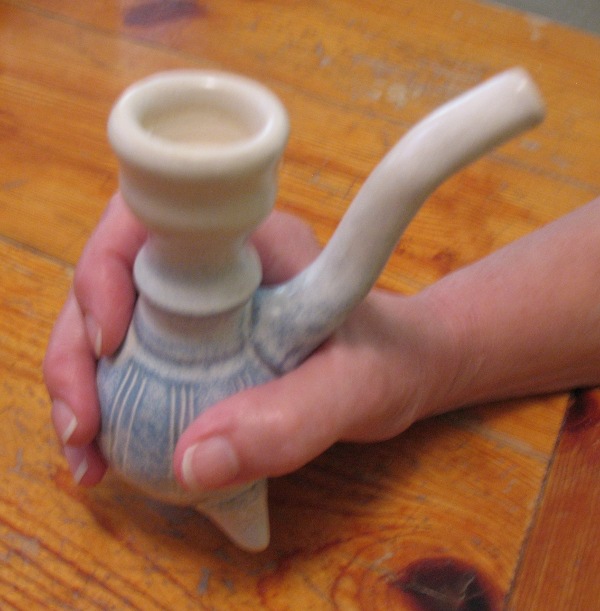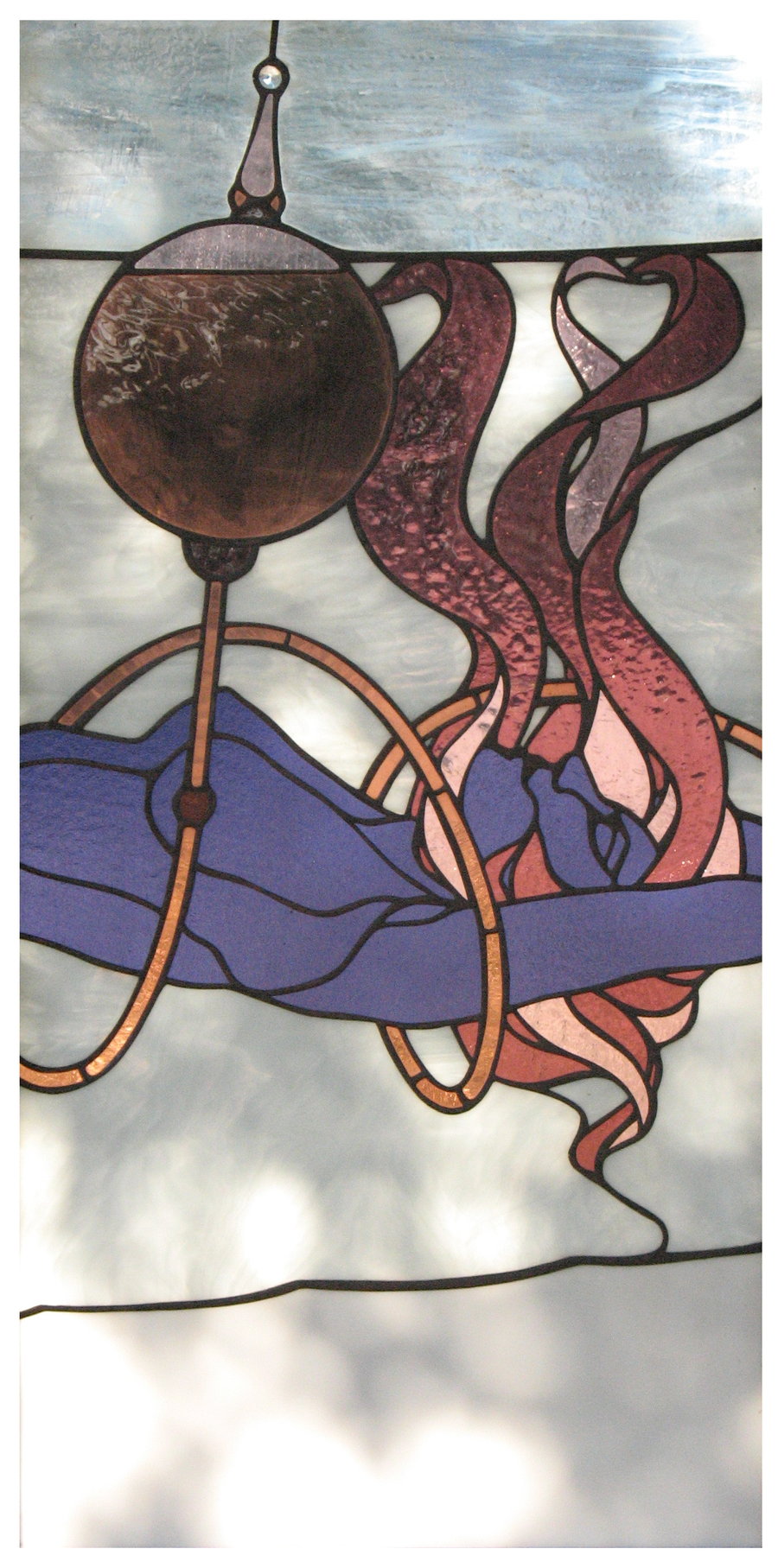
I’ve always been a maker of functional pots. It would no more occur to me to make purely sculptural ceramics than it would occur to me to jump out of a plane, with or without a parachute. Sure, I could probably do it, but I’m just not interested. At all.
That’s because I’ve always wanted to connect with the people who own my work. I’m not one of those artists who’d be content to starve quietly in a garret, unconcerned with whether or not anyone sees or appreciates my work. To be perfectly clear, I have starved in a garret, or something approaching a garret (which I’ve always thought of as some sort of creepy attic, maybe a place where Victorian dolls animated by evil spirits hang out) but I was never content. I always wanted my work to be seen and appreciated. I wanted my work to be used.
That’s one reason I’m enjoying the pipe making so much. You can be pretty certain that the folks who buy my pipes will use them. They aren’t likely to put these pipes in a display case or on a bric-a-brac shelf and let them gather dust.
That’s why it’s so important that these pipes be pleasant to hold. I doubt I’ll ever make porcelain equivalents of the glass heady pipes that sprawl across table tops and can never be moved lest important pieces fall off. I’m really only interested in pipes that can be held by a human being. Partly that’s for pragmatic reasons– use, but it’s also because of one of the great advantages of porcelain pipes over pipes made from other materials. Porcelain glazes (and other high-fire glazes) have uniquely interesting surface qualities, and an important element of those qualities is the way they feel.
So I pestered my lovely wife Nancy until she agreed to model several of my pipes, so you can see how they look in the human hand.

Nancy has small hands, and I got too close to the shot, so the bowl of this pipe isn’t as enormous as it appears here. Another shot of the same pipe, photographed more competently:
Here’s one of my favorite recent pipes, an ash-glazed salamander. Notice that it would really take two hands (if your hands are small) to use this pipe comfortably, because the carb hole is at the head of the newt. I’ve actually been making a new batch of carbless pipes this weekend, because Etsy does not permit pipes with carburetors or water pipes to be sold through their store, and they shut me down until I removed the offending items. That’s okay… it just accelerated my efforts to get this blog turned into a place where I can sell my pipes.
I’ve actually been making a new batch of carbless pipes this weekend, because Etsy does not permit pipes with carburetors or water pipes to be sold through their store, and they shut me down until I removed the offending items. That’s okay… it just accelerated my efforts to get this blog turned into a place where I can sell my pipes.
But for a pipe that really needs two hands, take a look at one of my favorite effigy water pipes.  The big turtle water pipe is nearing the edge of what is practical to hold and use, but this is an unavoidable drawback to big elaborate pipes. I love to make them, because they require a degree of skill that’s not common, and like many artists, I’m a bit of a show-off.
The big turtle water pipe is nearing the edge of what is practical to hold and use, but this is an unavoidable drawback to big elaborate pipes. I love to make them, because they require a degree of skill that’s not common, and like many artists, I’m a bit of a show-off.
 But it’s possible to make water pipes that do fit the hand beautifully. My last example shows this quality wonderfully well, and even filled with water, this pipe is entirely comfortable to hold.
But it’s possible to make water pipes that do fit the hand beautifully. My last example shows this quality wonderfully well, and even filled with water, this pipe is entirely comfortable to hold.
[contact-form][contact-field label=’Name’ type=’name’ required=’1’/][contact-field label=’Email’ type=’email’ required=’1’/][contact-field label=’Website’ type=’url’/][contact-field label=’Comment’ type=’textarea’ required=’1’/][/contact-form]

 so that while one is in use, the other can be cleaned. With a little care, these screens should last a lifetime. And using these safer screens might help make that lifetime a little longer.
so that while one is in use, the other can be cleaned. With a little care, these screens should last a lifetime. And using these safer screens might help make that lifetime a little longer.



















